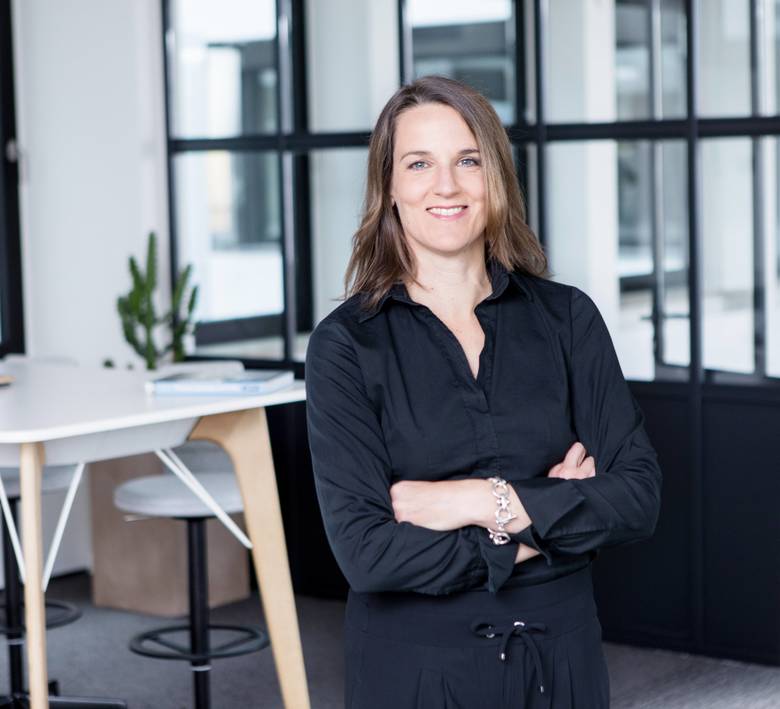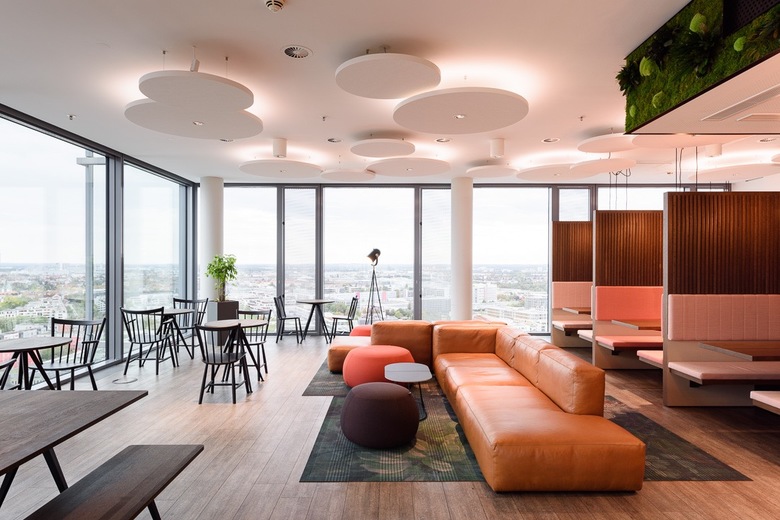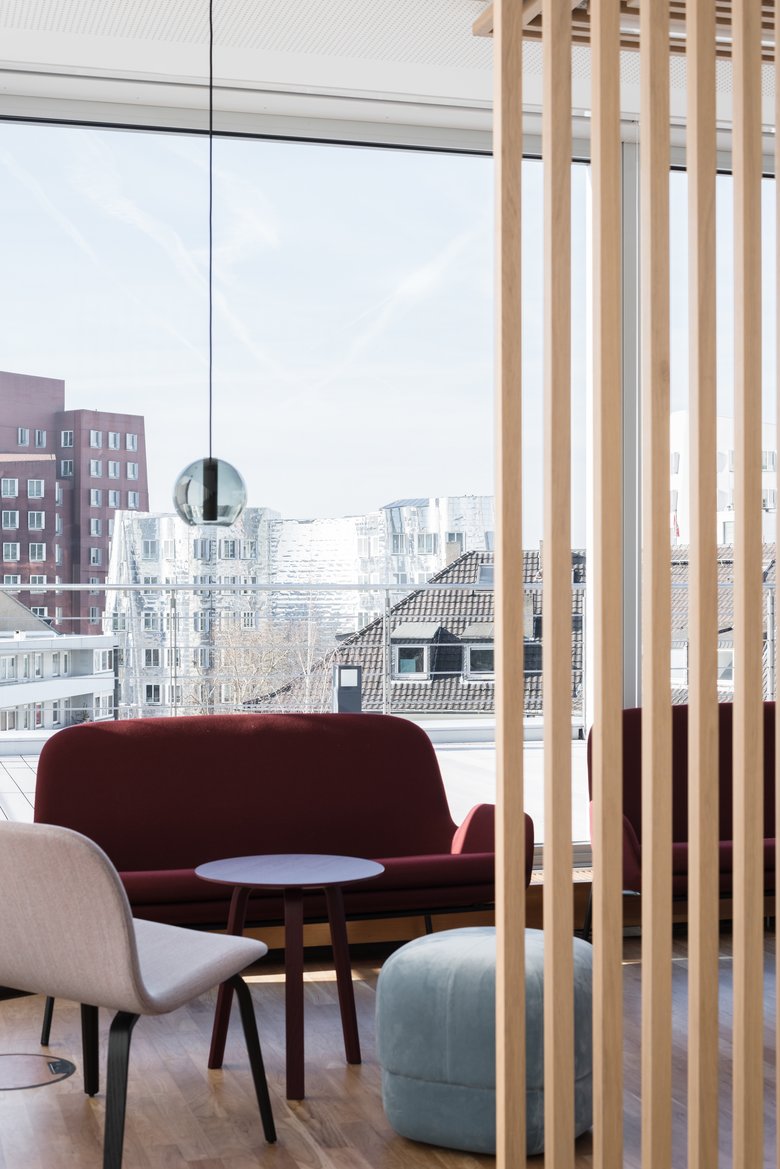Interview with Dr. Sandra Breuer, combine Consulting GmbH
Future Office: Smart Solutions I
Anyone planning an office today has to deal with a wide variety of possibilities in terms of both spatial and technological configuration. Working in the office has changed considerably in the last few years, new tools result in completely new concepts and also needs of cooperation—in real as well as in digital space. We asked an expert on office real estate and an internationally active architect to report on their planning experience. In this sequel: Dr. Sandra Breuer from combine Consulting. The second interview with Kai-Uwe Bergmann from BIG Bjarke Ingels Group can be found here.
»Modern working environments go far beyond architecture and design.«
Thomas Geuder: Mrs. Breuer, the name of your company combine not only indicates that it developed in 2015 from the firms Quickborner Team and macon, but also stands for far-reaching interdisciplinarity. To what extent do you think this approach should also be reflected in an office concept?
Sandra Breuer: Over the past six decades, combine Consulting and its predecessor companies Quickborner Team and macon have planned hundreds of thousands of square meters of office and work space all over the world. We have successfully supported German medium-sized companies as well as international corporations in the forward-looking adjustment of their working environments. That's why we know: The workplace no longer just consists of a desk and a chair. Office concepts are only future-oriented and sustainable if they go beyond simple office planning. Working worlds are, so to speak, total works of art, in which aspects of (collaborative) work culture and work organization (behavior), the building (bricks) and the technical infrastructure (bytes) must be equally incorporated. Bricks, bytes and behavior are the necessary levers to develop a good working environment. Only in the interaction and careful curation of these three components can we succeed in creating a working environment that creates an experience and generates a place that is more than just an office.
Thomas Geuder: combine's company history goes back to 1956, a time when working in the office was completely different, highly territorial and (of course) very analog. Many ideas and concepts of working have been conceived since then, not all of them have proven to be meaningful and practicable. In your opinion, what were the biggest impasses in office planning?
Sandra Breuer: In retrospect, there may have been ideas and concepts that seem like trials and tribulations to us today. Every concept and every office building, however, originates from the architectural and technical possibilities of its time and the respective view of the future. The office concept should always focus on the users, their activities and their work organization, because work changes, people change, and office buildings and concepts must therefore be able to react flexibly to this. Only then can they be used in a sustainable and successful way.
Thomas Geuder: Your references include several large and globally active companies that have probably defined their demands on the configuration of an office property quite precisely—and as builder-owner or subsequent operator (sometimes also as facility manager), possibly also conservatively. Is it at all possible to achieve a change in corporate culture towards new office concepts within such structures?
Sandra Breuer: Against the background of sustainability, an office property should not react to specific office concepts but rather be usable as flexibly as possible for different concepts. Good work is not dependent on a specific floor plan or building. If you examine the topic of work and the requirements of users, good working environments can be created anywhere. Of course, some buildings favor certain concepts, or others need to be emotionally charged more intensively.
Thomas Geuder: Building and thus the office are currently becoming smarter and smarter. Rooms automatically react to users, individuality and well-being are important factors for employee satisfaction and productivity. Allow us to take a look behind the scenes at your office: What are the tools you use to determine which workplace concept employees not only want but also need?
Sandra Breuer: For us, the user and his activities are always the starting point and focus. The functionality of an office is derived from this. We enter into a very intensive discourse with the users by means of interactive formats such as workshops or interviews. We do not only talk to executives, but we also involve the broadest possible cross-section of the workforce. The focus is on the work itself, the activities, the daily routine, what works in it and what should be changed. Only when we believe that we have understood all of this, we turn to the building. This means that we always work from the inside out, from the organization to the building. Depending on the type and size of the project, it often takes years from the idea to the concept to completion. During this time, we work very intensively with people, also to prepare them for a new job.
Thomas Geuder: Strictly speaking, digital and smart tools have long since freed work from the fixed workplace. Many things could be done anywhere, an idea that is often more in keeping with an employee's concept of life. Employers, on the other hand, would still like to have their flock with them, in the shared office. Which attitude do you think is better?
Sandra Breuer: What's this really about? Control or better work? I think that generic process-like work will be more and more automated in the future. What remains are communication and collaboration. And this is exactly where I experience what I call the longing for the analog: a return to personal contact, to paper and pen. Creative work in particular needs analog tools in the early stages. It's not for nothing that model making is still an elementary component of a design process despite all the digital possibilities. How else could the triumphal march of Design Thinking be explained, where post-its and prototypes create very analog and haptic experiences?
Thomas Geuder: On your website you comment: "Modern work environments go far beyond architecture and design. They are the essential building block of organisational development, which focuses on the question: How do we want to work tomorrow?" Please give us some details: How do you work at the moment and what will your ideal office look like in the future?
Sandra Breuer: We work very differently in our four offices, also in order to try out different possibilities for our clients. Our most recently opened Berlin office is a flexible space laboratory. The WC core and the kitchen unit are the only built-in fixtures, everything else (from table and chair to room) is completely flexible. Our clients are looking for experience with flexible offices. That's what we want to offer. In principle, we work completely non-territorially in all of our offices. We don't have fixed workplaces. We offer a varied selection of spatial situations that make it possible to find the right workspace for the respective activity and perhaps even the prevailing mood. In the future, as digitalization progresses, personal communication and collaboration will become even more important, as will creative coexistence. Here, good working environments will create scope.
Paperworld and the Future Office
Paperworld is the world's most important information and communication platform for modern office design. Every year, the trade fair in Frankfurt am Main presents the latest products and trends in the national and international paper, office supplies and stationery sectors. The innovation area Future Office addresses architects, facility managers and planners as well as retailers of office supplies and furnishings. After celebrating its successful premiere in 2017, the fourth edition of Future Office focuses on Smart Solutions. It is about the diverse opportunities that the current change in the world of work entails, presented in a stimulating and inspiring setting. The design concept of the area is once again the responsibility of the architectural office Matter, with the internationally renowned architect André Schmidt from Berlin and World-Architects. The Future Office innovation area is located in Hall 3.0 Stand C51 and will present lectures and new ideas on tomorrow's world of work all day during Paperworld from 25 to 28 January 2020.
Registration for the lectures on 27 and 28 January 2020 in Frankfurt am Main with Klaus Dederichs (Drees & Sommer SE), Sandra Breuer (combine Consulting GmbH), Martin Haas (haascookzemmrich STUDIO2050), Jan Kleihues (Kleihues + Kleihues), Julian Weyer (C. F. Møller Architects), Jennifer Ester (KSP Jürgen Engel), Herwig Spiegl (AllesWirdGut Architektur ZT GmbH) and Tobias Wulf (wulf architekten):
Paperworld 2020 – Future Office – Registration
World-Architects is content partner of Messe Frankfurt.






